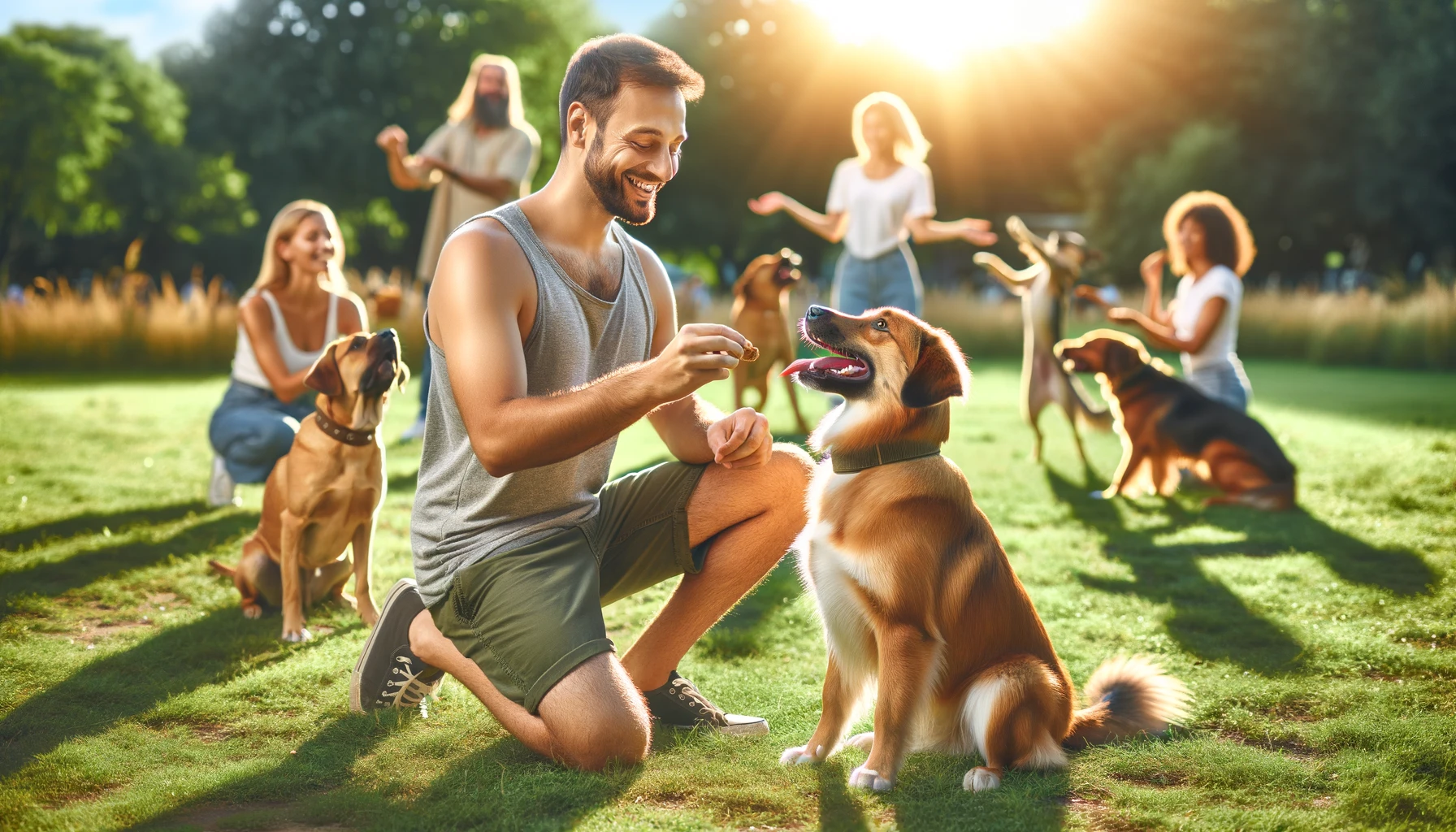Embarking on the journey of welcoming a new puppy into your home fills the air with excitement and joy, but along with those cuddles and wagging tails often comes a sharp nip that can leave even the most patient of owners feeling bewildered.
Understanding why puppies bite is not merely about deciphering their playful yet sometimes painful behavior; it delves deeper into decoding their innate instincts, communication styles, and learning patterns.
Behind every adorable face lies a world of curiosity and exploration, manifesting through their teeth in ways that can puzzle even the most seasoned pet parent.
As we unravel the layers behind this common puppy behavior, imagine stepping into your furry companion’s paws for a moment. Picture navigating an unfamiliar world filled with novel scents, sights, and textures — wouldn’t you too resort to nibbling on everything within reach to make sense of it all?
The urge to explore through chewing stems from more than just mere teething troubles; it reflects a fundamental aspect of canine nature that craves interaction and stimulation.
By tapping into this perspective, we lay the foundation for cultivating a harmonious bond between owner and pup based on understanding rather than exasperation or reprimand.
So grab hold of your leash as we embark on an enlightening journey to decode why puppies bite — together uncovering invaluable insights that will transform frustration into mutual growth and thriving companionship.
Positive Reinforcement Training Techniques
When it comes to teaching your puppy good behavior, positive reinforcement is a powerful tool in your training arsenal.
Instead of focusing on punishment for unwanted behaviors like biting and nipping, positive reinforcement emphasizes rewarding desired actions with treats, praise, or playtime.
This approach not only helps build a strong bond between you and your puppy but also makes learning more enjoyable for them.
One effective technique is clicker training – using a small device that makes a distinct sound (like a click) to mark the exact moment when your puppy displays the desired behavior.
Pairing this sound with rewards helps establish clear communication and speeds up the learning process.
Remember, consistency is key when using positive reinforcement; make sure to reward good behavior every time it occurs to reinforce the connection between their action and the reward they receive.
Engaging in interactive games and activities can further strengthen the effectiveness of positive reinforcement training techniques.
Consider incorporating fun tasks like hide-and-seek with treats or puzzle toys that challenge your puppy’s problem-solving skills while rewarding them for their efforts.
By making training sessions engaging and mentally stimulating, you create an environment where learning becomes an exciting opportunity rather than a chore for your furry companion.
The Crucial Role of Socialization in Developing Bite Inhibition
Socialization plays a fundamental role in shaping a puppy’s behavior, particularly when it comes to bite inhibition. Through exposure to various stimuli, including different people, animals, and environments, puppies learn important social cues and boundaries.
This early interaction helps them understand how much pressure is acceptable during play and prevents aggressive tendencies from developing later on. By engaging in positive social experiences at an early age, puppies can grasp the concept of gentle mouthing and appropriate interactions with others.
Furthermore, socialization not only aids in fostering bite inhibition but also contributes to overall well-rounded development for your furry companion. It builds confidence, reduces fear-based behaviors, and enhances adaptability to unfamiliar situations.
Encouraging positive encounters with other dogs teaches valuable communication skills and reinforces the understanding of acceptable behavior within canine communities.
Therefore, investing time and effort into purposeful socialization exercises significantly influences your puppy’s ability to navigate social dynamics while curbing undesirable biting habits effectively.
Redirecting Behavior with Toys and Chews
When your furry friend has a strong urge to nip or bite, redirecting their attention to appropriate toys and chews can work wonders. Puppies explore the world with their mouths, so offering them a variety of textures and flavors in chew toys not only redirects their energy but also helps soothe teething discomfort.
Opt for durable rubber toys that are specifically designed for teething puppies, as these provide relief while discouraging destructive chewing habits. Interactive puzzle toys filled with treats can engage your puppy’s mind and keep them entertained, redirecting their focus away from nipping at your hands or clothing.
Moreover, introducing different textures like rope toys or nylon bones can satisfy your puppy’s natural instinct to chew without resorting to inappropriate biting behavior.
Remember to rotate the selection of toys regularly to keep things interesting for your pup – this not only prevents boredom but also reinforces positive chewing habits.
By consistently providing engaging alternatives whenever you notice unwanted nipping tendencies, you’re actively shaping good behavior while strengthening the bond between you and your playful companion.
Consistency in Training Methods
Consistency is the key to successfully training your puppy to stop biting and nipping. Just like building any new habit, puppies thrive on routine and predictability.
When it comes to training, using consistent methods and responses helps your furry friend understand what is expected of them.
This means that all family members involved in the puppy’s training should be on the same page when it comes to techniques used, timing of rewards or redirections, and responses to undesired behaviors.
Imagine if one day you rewarded your puppy for sitting before being fed, but the next day scolded them for jumping up during mealtime – this inconsistency can confuse your pup and hinder their progress.
By sticking to a set plan of action and reinforcing positive behaviors consistently across different situations, you’re setting clear expectations that allow your puppy to learn effectively. Remember, patience is essential – behavior change takes time, repetition, and most importantly consistency.
In addition to verbal commands and physical cues, consistency extends to how you react emotionally towards your puppy’s behavior. Stay calm yet firm when redirecting inappropriate actions like biting or chewing on furniture.
Your consistent response will help communicate boundaries clearly while nurturing a trusting relationship with your little companion based on respect and understanding.
Recap and Final Thoughts
As you embark on the journey of training your puppy to stop biting and nipping, remember that consistency is key. It’s normal for puppies to test boundaries, especially when it comes to playfully mouthing or nibbling.
By following the strategies outlined in this article and remaining patient, you’ll be able to guide your furry friend towards more appropriate behavior while strengthening your bond along the way.
Additionally, don’t forget that positive reinforcement goes a long way in shaping your puppy’s actions. Celebrate small victories together, whether it’s through verbal praise, treats, or affectionate pats.
Each moment of progress is a step in the right direction towards a harmonious relationship with your pup. With dedication and understanding, both you and your puppy can navigate this learning process together successfully.






